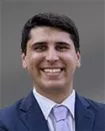- within Litigation and Mediation & Arbitration topic(s)
- in United States
- within Law Department Performance, Accounting and Audit and Law Practice Management topic(s)
On September 2, 2025, the Pennsylvania Superior Court overturned a plaintiff's nearly $1 million verdict due to prejudicial comments by the plaintiff's counsel during opening arguments and improper jury instructions and charges on causation. Specifically, the court in Lewis v. Reading Hospital, et al. overturned the verdict because (1) plaintiff counsel's improperly suggested during opening statements that defendants could not find a single expert to rebut plaintiff's causation expert, inferring weakness in their case at its inception and causing substantial prejudice to defendants and (2) the trial court's jury instructions conflated increased risk of harm with factual cause, improperly easing plaintiff's burden of proving liability. This ruling serves as a beneficial reminder on the utility of proactively trying to preclude prejudicial statements through motions in limine, the necessity of properly objecting to such statements and seeking appropriate relief should they nonetheless be made, and the importance of advocation for proper instructions and objecting to those that force a lower burden of proof.
Background and Case Posture
Plaintiff Ronald Lewis underwent open vascular surgery at Reading Hospital in 2021. He claimed that defendants Reading Hospital, Tower Health Medical Group and Robert Q. Luo M.D. negligently treated him after his surgery. Plaintiff's counsel claimed that Lewis complained of severe pain, swelling and discoloration in his left foot, and rather than treat his symptoms immediately, Dr. Luo opted to monitor him "to better ascertain whether and to what extent tissue from his foot would have to be removed." See Opinion, at 2. Plaintiff further alleged that a likely cause of Lewis' symptoms was an ischemic injury caused by the loosening of plaque from his arteries during the vascular surgery, yet Luo "believed that there was no viable surgical or medicinal means of remedying the underlying ischemic injury." Id. Three weeks after surgery, Lewis' foot developed gangrene and had to be amputated.
Lewis then filed suit. In support of their case, defendants retained Dr. Herrick Wun, a board-certified vascular surgeon. Dr. Wun opined in his expert report "that there was no surgical option for removing the clots in Appellee's arteries" and "an anticoagulant would not have prevented the need to amputate Appellee's foot." See id., at 3. Therefore, Luo could not have breached the standard of care, and no breach by Luo could have caused Lewis' injuries.
Lewis filed a motion in limine to preclude Wun from relying on unidentified medical literature referred to in his report. The trial court ordered Wun to name the studies he relied upon, yet he submitted a supplemental report which again cited no studies to support his opinions. Lewis moved again to preclude Wun's testimony, and after oral argument, the trial court granted Lewis' motion and precluded Wun from giving any expert opinions in this case. When trial began, plaintiff's counsel suggested in his opening statement that defendants could not find a vascular surgery expert who believed that Luo had abided by the standard of care. Defendants moved for a mistrial. The trial court denied the motion but agreed to give a cautionary jury instruction about counsel's opening statement not being evidence in this case.
At the end of trial, after much contention between the parties, the trial court instructed the jury on causation as follows: "Even though prior conditions or concurrent causes may have contributed to the harm or an increased risk of harm, if the defendants' negligence factually caused harm or an increased risk of harm, the defendants are liable for the full amount of damages sustained... ." See id. at 11–12. The jury charge on causation asked, "Was the negligence of those Defendants you have found to be negligent, a cause of harm or an increased risk of harm to the Plaintiff?" Id. at 13 (emphasis added). The jury returned a verdict for Lewis and awarded him $869,000 in damages.
The Superior Court's Decision
On appeal, defendants argued that (1) plaintiff counsel's remarks during his opening statement regarding defendants' alleged inability to retain a vascular surgery expert were unfairly prejudicial and could not be cured by a jury instruction and (2) the trial court's jury instruction and charge on causation improperly explained the element of causation. The Superior Court agreed with both arguments.
The Superior Court first explained, "The jury could easily have attributed undue weight to counsel from the outset before it heard any trial evidence," especially where the comment pertained to expert testimony. Id. at 25. This "most assuredly could have handicapped Appellants' ability to defend against Appellee's claim." Id. The court further found that the "prejudice of counsel's remark in this case was too great to be remedied by an instruction." Id. at 26. The trial court abused its discretion in denying defendants' motion for a mistrial.
Regarding defendants' argument on the trial court's jury instruction and charge on causation, the court held that an "increased risk of harm should not be equated with factual (proximate) cause," and evidence of increased risk of harm "furnishes the basis for the fact-finder to go further and find that such increased risk was in turn a substantial factor in bringing about the resultant harm." Id. at 33 (quoting Sutherland v. Monongahela Valley Hosp., 856 A.2d 55, 60 (Pa. Super. 2004)). The court held that the trial court's instructions were erroneous, improperly eased plaintiff's burden of proving liability and deprived defendants of a fair trial because they "repeatedly equat[ed] an increased risk of harm with factual cause." Id. at 35. The court granted defendants' appeal on these two bases and remanded the case.
Implications
The Lewis decision makes clear that defendants must proactively combat prejudicial comments by plaintiffs' counsel before the start of trial, as these remarks often cannot be cured by jury instruction. Defendants should consider filing motions in limine to affirmatively create boundaries that prohibit plaintiffs' counsel from making prejudicial remarks at trial—particularly if there are expected areas of concern that will arise. While this type of conduct should be prohibited regardless, citation to the bounds of an in limine ruling provides a clear road map for reining in conduct during trial to more successfully advocate for desired relief. This may be bolstered through potential joint trial stipulations on information that is impermissible or conduct that is objectionable. As to jury instructions, defendants should also advocate for the appropriate legal standards in pretrial proceedings and—if an incorrect standard is applied—properly preserve all objections. This is particularly relevant as plaintiffs continue to attempt to insert lower standards through the increased risk of harm threshold, which is only proper in certain cases and only applies to proximate causation.
For More Information
If you have any questions about this Alert, please contact Sharon L. Caffrey, Robert M. Palumbos, Anne A. Gruner, J.J. Larkins, any of the attorneys in our Trial Practice Group or the attorney in the firm with whom you are regularly in contact.
Disclaimer: This Alert has been prepared and published for informational purposes only and is not offered, nor should be construed, as legal advice. For more information, please see the firm's full disclaimer.




